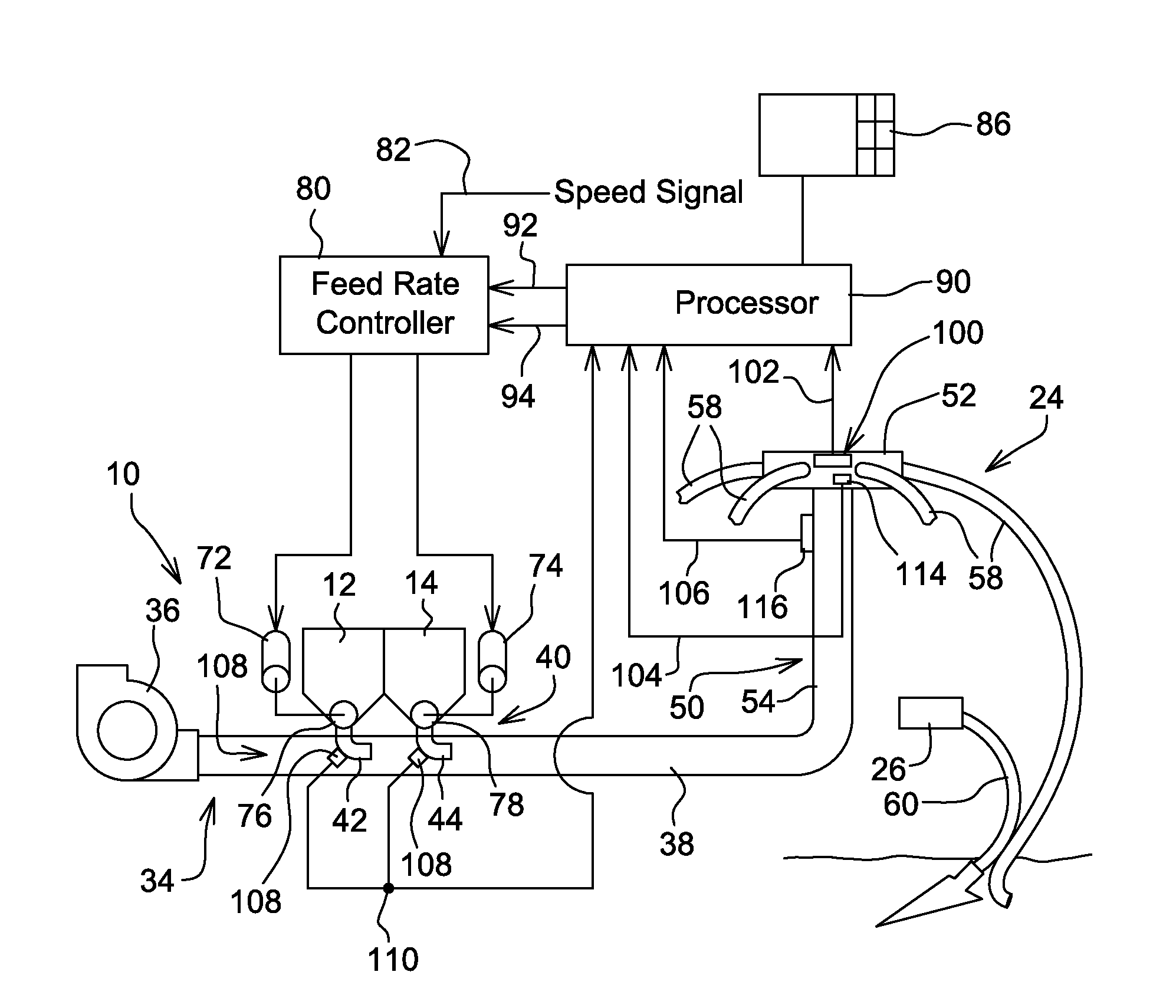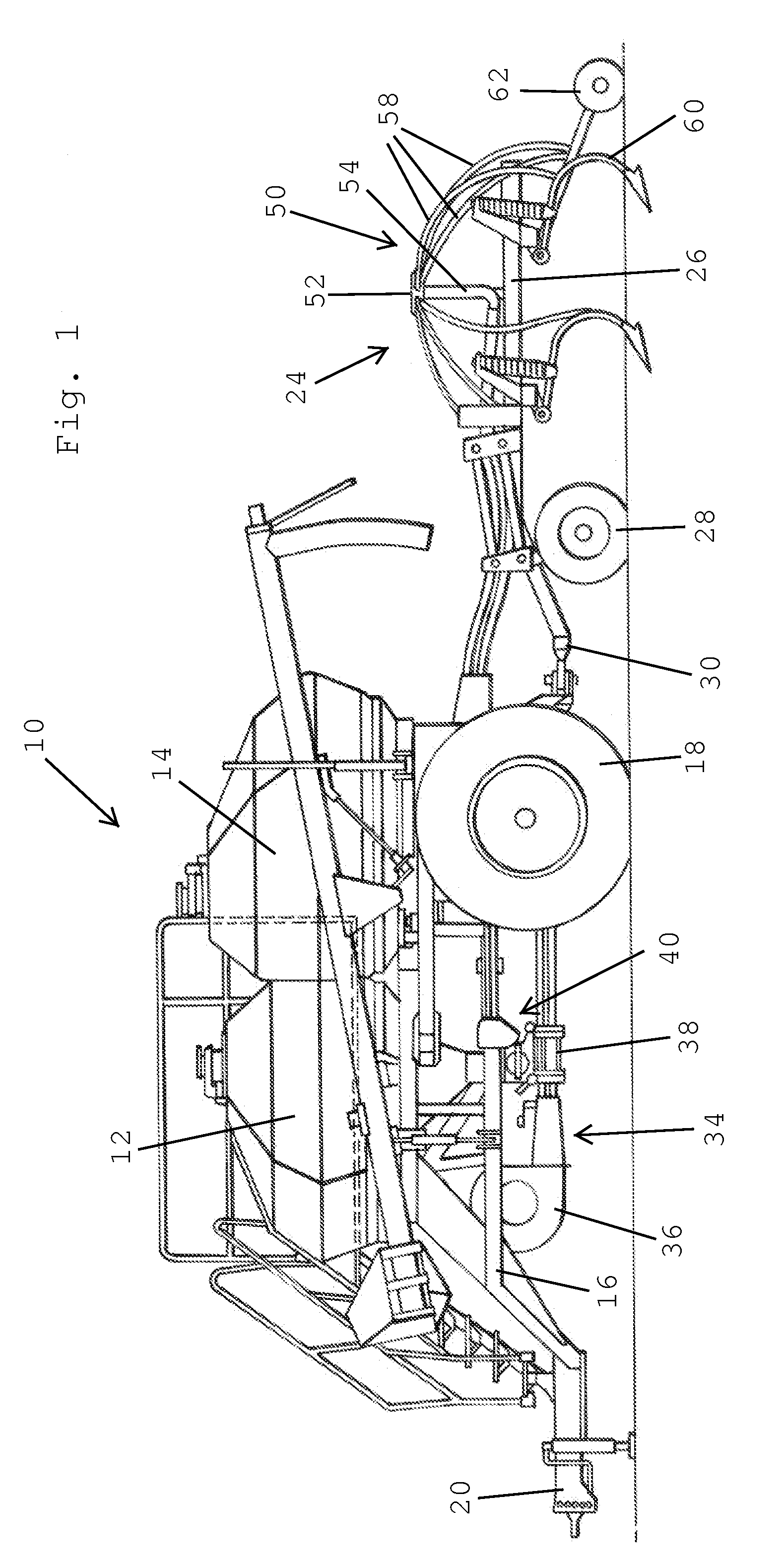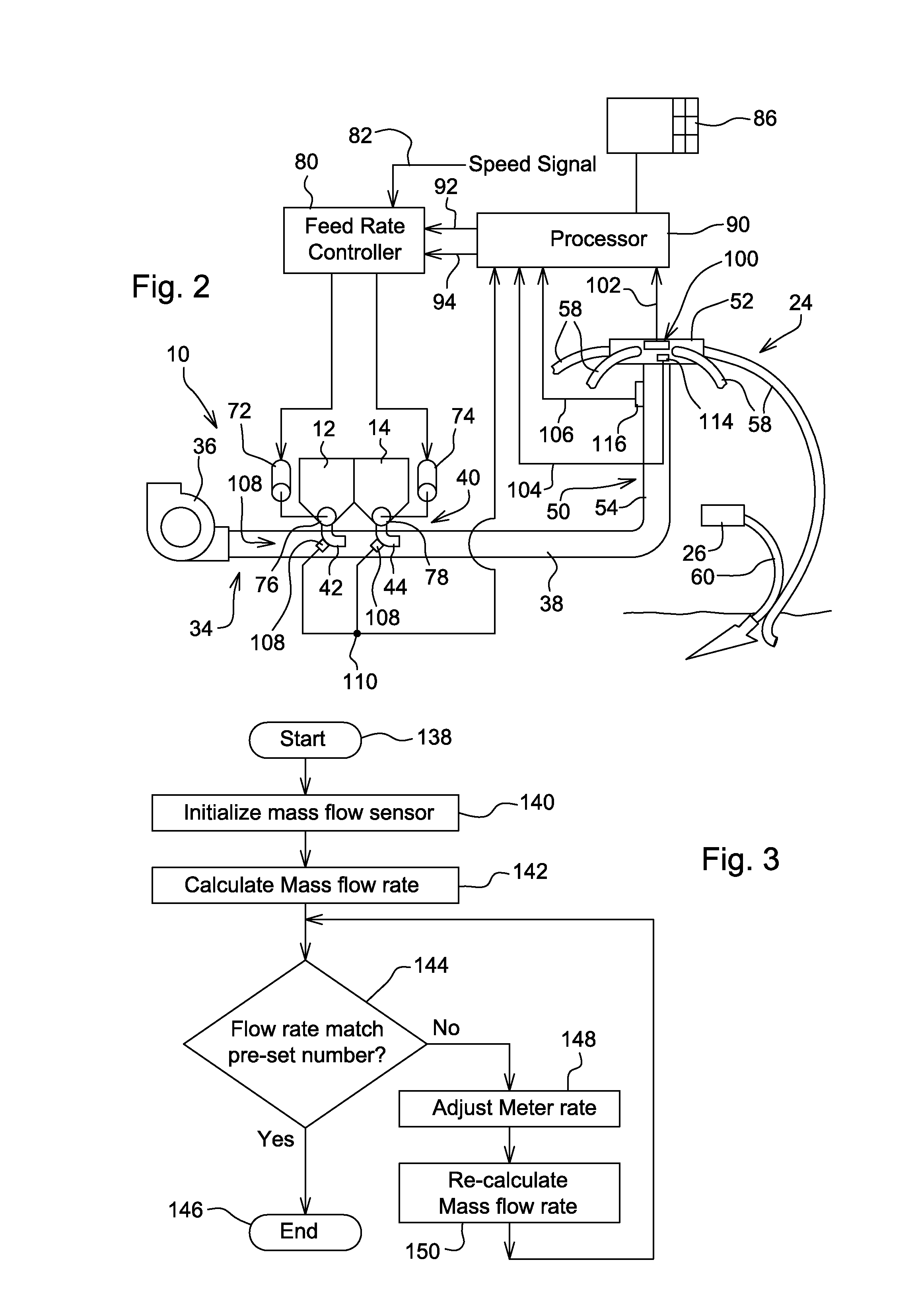Particulate flow sensing for an agricultural implement
a technology of agricultural implements and air, applied in the field of mass flow sensors, can solve problems such as productivity reduction, and achieve the effect of reducing calibration delays and more accurate seeding and fertilization rates
- Summary
- Abstract
- Description
- Claims
- Application Information
AI Technical Summary
Benefits of technology
Problems solved by technology
Method used
Image
Examples
Embodiment Construction
[0021]Referring to FIG. 1, therein is shown a seeding and fertilizing implement 10 including tanks 12 and 14 for containing materials to be distributed to the soil. The tanks 12 and 14 are mounted on a frame 16 supported by ground wheels 18 for forward movement over the ground by a towing vehicle (not shown) connected to a forward hitch 20. A ground-engaging implement 24 includes a frame 26 supported by ground wheels 28 and connected to the rear of the frame 16 by a hitch 30.
[0022]An air system 34 includes a fan 36 connected to the frame 16 and directing air rearwardly through material delivery conduit structure 38. Material metering structure 40 delivers the materials from the tanks 12 and 14 through venturi structure 42 and 44 into the material delivery conduit structure 38. The material is then carried rearwardly in the air stream to secondary distribution towers 50. Each tower 50 includes an uppermost distributing head 52 located at the uppermost end of a vertical distribution t...
PUM
 Login to View More
Login to View More Abstract
Description
Claims
Application Information
 Login to View More
Login to View More - R&D
- Intellectual Property
- Life Sciences
- Materials
- Tech Scout
- Unparalleled Data Quality
- Higher Quality Content
- 60% Fewer Hallucinations
Browse by: Latest US Patents, China's latest patents, Technical Efficacy Thesaurus, Application Domain, Technology Topic, Popular Technical Reports.
© 2025 PatSnap. All rights reserved.Legal|Privacy policy|Modern Slavery Act Transparency Statement|Sitemap|About US| Contact US: help@patsnap.com



